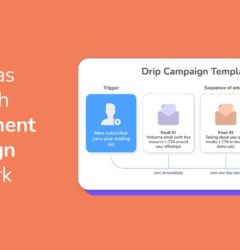
How to conduct a structured interview?
In the mid-50s, when Israel was still an infant state, a 21-year-old bright student of psychology was assigned to set up an interview system for the entire army! The student, unknowingly opened doors for other researchers to find the most effective way of interviewing and making interviews a leading indicator of a candidate’s success. The young student was Nobel laureate Daniel Kahneman and the method is the structured interview process.
The simple goal of the interview process was to assign each candidate a score on general fitness for combat and to find the best match for his personality among various branches. The problem was that interview scores showed almost no correlation with the future success of the soldier and this is what he had to solve! Being a follower of Paul Meehl, Kahneman believed that simple linear statistical rules are more accurate than human “intuition”. He went ahead and tested it. The interviewers were supposed to rate the candidates on several independent personality traits and score each separately. The final score would be computed using a standard linear equation. Kahneman faced a lot of pushback on this, taking the human element out of the interview process. Kahneman finally conceded that at the end of the interview, interviewers could “close their eyes, try to imagine the recruit as a soldier, and assign a score from 1 to 5”.
A few hundred interviews later, the correlation between interview performance and performance as a soldier improved significantly from “completely useless” to “moderately useful.”
Kahneman inadvertently opened the door to a large body of research and paved the way for actually figuring out how to make interviews leading indicators of a candidate’s success on the job. What’s worse is, as we later found out that interviews actually end up compromising the recruitment process, undermining the more useful methods of assessing candidates.
Also, check our blog on recruiting statistics.
What’s wrong with the way we do interviews?
Quite predictably, interviews are the worst predictors of success on the job. Most interviews are completely useless and have been documented and validated by research multiple times. However, interviews serve a very critical filter. That of human interaction. The decision of hire or no hire is too critical to be left to algorithms(at least for now) and they are an important cultural fit filter.
Evaluating someone in a 60-minute interview is an impossible task. So, interviewers when asked “Do you think this candidate is fit for the job?” replace the questions with “How much do I like this candidate?”. It’s a fairly normal psychological process where our brains substitute a hard question with an easier one and answer that one.
Also, check out our blog on strategic interview questions to ask candidates.
We are also naturally biased to see “likeness”. Interviewers end up preferring people who are “like” them. This is hugely problematic for everyone. Instead of creating a diverse and best at their job team, you end up building a team of homogeneous people “alike one another”.
The most reliable predictors of success
Past performance and the candidate’s score on a take-home test or a trial project are the best predictors of a candidate’s success at the job. Both of these evaluations don’t involve much human “intuition” to come into the picture.
Human judgment, while weak, is not completely useless. It is probably the most critical filter where you find the candidate’s cultural fit and answer “whether is this the kind of person who can fit well in the team or not.”
Your recruitment process is as good as the worst interviewer you have. So you need a nudge for the interviewers to think objectively and become better interviewers. A structured interview is a process to nudge interviewers toward taking more objective decisions and probably the best way we have found to eliminate the substitution of a hard question for an easy one.
Also, check The Ultimate Recruiter’s Guide in Video Interviewing
How to do structured interviews?
- Define the traits you want in the candidate: Create independent traits that are essential to a candidate’s success at the job. It is important that these traits are as independent of each other as possible. Let’s say you are hiring a product manager. You are probably looking for, a person who is “detail-oriented”, “analytical”, “has an eye for design and aesthetics”, “good with people”, and “a great communicator”. Ideally, you should limit the list of traits to 5 or 6 independent traits.
- How to measure: Figure out how you are going to analyze each of these traits. Create a bunch of questions to figure out each trait and what answer should be rated 5 versus what answer should be rated 3. Decide on the what’s the score a candidate needs to get in order to get the job. The minimum threshold to clear for each trait and the minimum overall score to get the job done well.
- Interviewer instructions: Write detailed instructions about these traits and questions for the interviewers. Stick to the pre-decided order of questions. Make sure that interviewers take detailed notes in the interview.
- Getting feedback: As a policy make sure that interviewers submit the feedback within 24 hours of the interview. Interviewers will not remember the things discussed in the interview after a day. If they submit the interview feedback later, we get back to the same problem of our brains substituting a hard question with an easier one.
- Move fast: Once a candidate exceeds your expectation of what would it take to do the job, extend the offer. This might even be the first candidate you interview, don’t wait around to find a “better match”.
In the age of data, it is surprising how little data we have generated around recruitment. The dearth of data does not allow leaders to accurately measure what’s working and what’s not working with recruitment and you can’t improve what you can’t measure. The structured interview is your first step towards bringing measurement to the otherwise black box of the interview process and making your recruitment process data-driven.
Use Recruiterflow to structure your interview process.
Get Started for Free.



Manan Shah